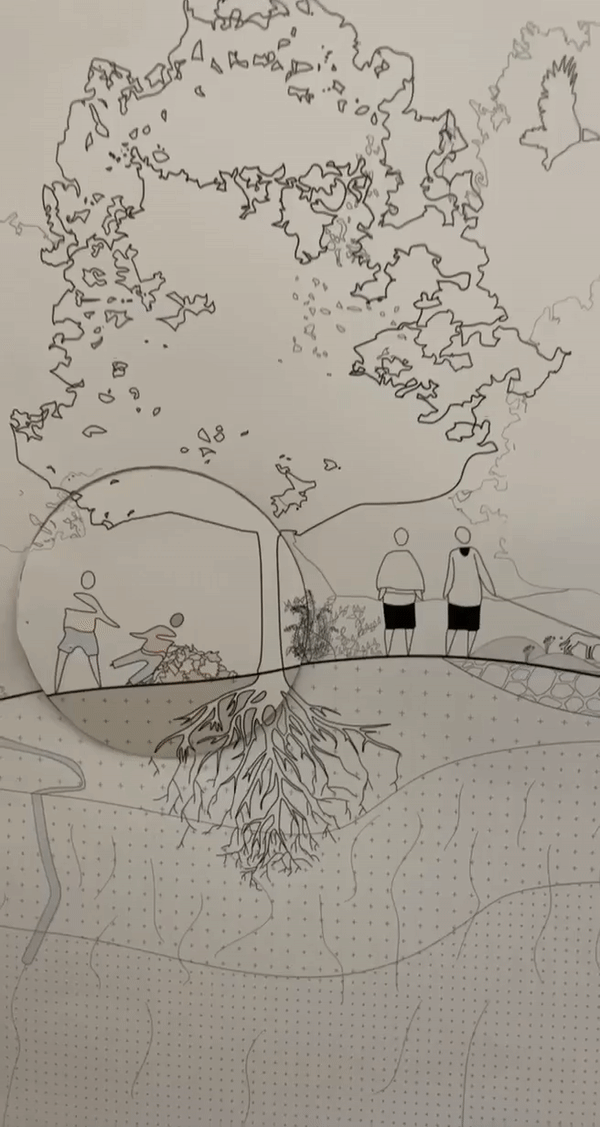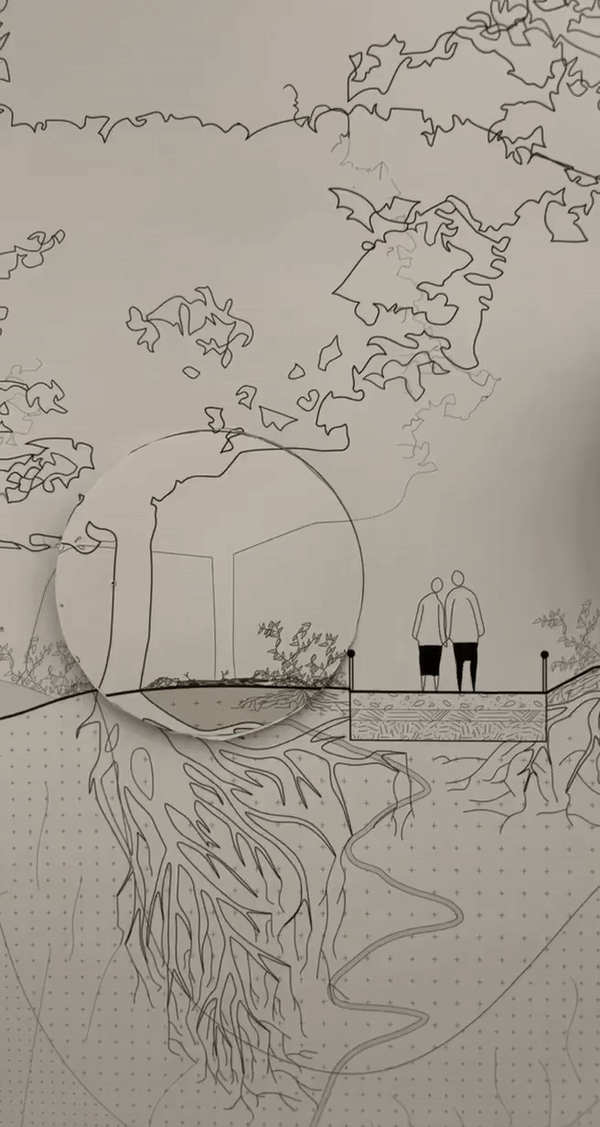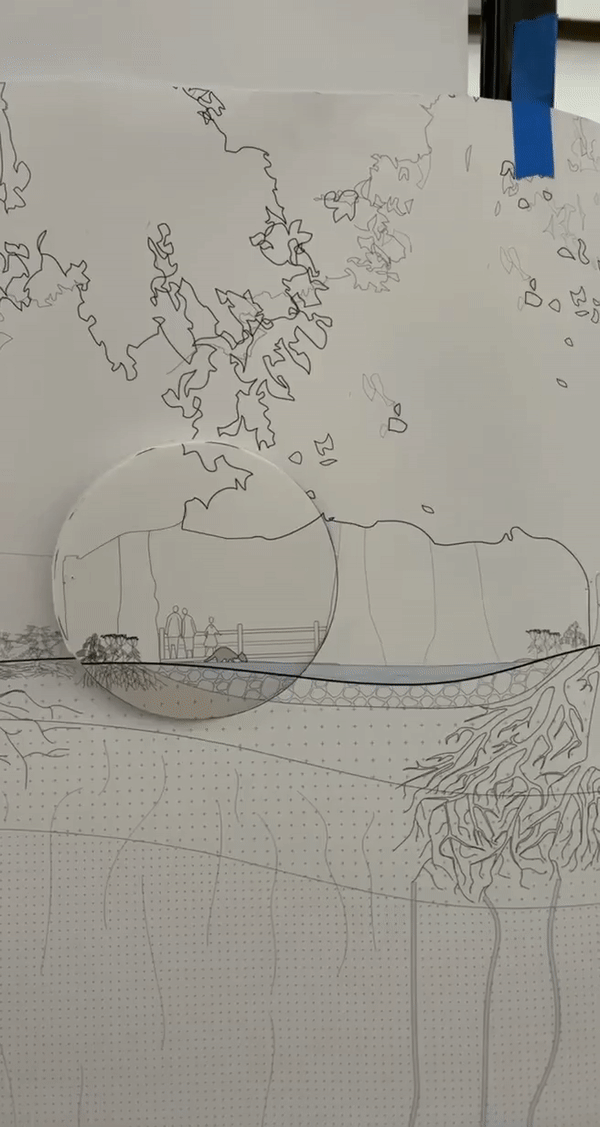 |  |  |
|---|---|---|
 |  |  |
 |  |  |
 |  |  |
 |  |  |
 |  |  |
 |  |
Hollowplexus
DESIGNING FOR THE PLURIVERSE
Hollowplexus is an invitation. As one progresses through or around it, the structure contorts and dissolves as though it were a tree hollowing out over hundreds of years. The experience culminates in a mindful terminus as the structure lifts off the ground and opens up to reveal a gorgeous view of the Gill. This moment requires the user to pause their play and remember the finality of both their current fleeting experience in the Ramble as well as of the tragically beautiful necessity of all life to end so that more life can thrive, a concept so frequently ignored that human culture has allowed it to fester into climate nihilism and apathy.
A decomposing raccoon corpse attracts hundreds of blow flies. A meandering centipede forages through a rat skull. A thriving mossy patch overtakes the Summerhouse cedar shake roof structure. A spider web lies protected in a Green Ash hollow rotted away long ago. Such duality can be traced back to the indigenous Lenape’s “Mesingw” forest spirit, who maintains balance in nature while donning a mask painted half black and half red. His simultaneous embodiment of life and death in nature exemplifies my observations in the Ramble and the experience that Hollowplexus fosters.
Contemporary American culture has purged any notion of the balanced relationship between life and death in nature that Mesingw offers. To change our timidity towards death, we need to confront it from unexpected angles—of exploration, curiosity, and play. We already play atop these systems while simultaneously avoiding them. To mend the bifurcation of nature and culture, we need a culture that understands life AND death through nature, as one. Starting with a deep analysis of the site allows one to absorb these lessons that nature teaches us, as illustrated in the above diagram.
Hollowplexus also provides habitat conditions for at least two species in the Ramble—the Eastern Chipmunk and the Hoary Bat. The network of channels where the structure meets the ground allows for chipmunks to safely burrow, forage, and travel through the structure as a home base on their daily 1⁄3 mile-ranged roaming. The chipmunk’s diet consists in part of the sporocarps of mycorrhizal fungi, providing an essential role in disseminating germinated spores through their feces.
Eaves in the upper structure that resemble bat boxes allow shelter and safety for the Hoary bat. While female Hoary bats will be attracted to the deciduous trees in the Ramble, male Hoary bats prefer coniferous trees such as those found
in the adjacent Cedar Hill area of Central Park. Since softwood trees can host up to 6 times more pounds per acre of truffles than hardwoods, that makes Cedar Hill (which is almost exactly 1⁄3 of a mile from Hollowplexus) an optimal recipient of the chipmunk’s fungal dispersion, which in turn catalyzes growth of the conifers to host male Hoary bats that can then mate with the female Hoary bats likely found closer to the Ramble.
A higher bat population means increased
pollination and insect control, which also means that chipmunks, who do eat insects as well, may be more likely to eat sporocarps, keeping these relationships mutually beneficial and cyclically perpetual. Ultimately, the resulting enhanced mycorrhizal root connections will ensure that these non-human communities continue to thrive in this forested ecosystem.
WHAT
Intervention for the Pluriverse
WHERE
Ramble, Central Park
WHEN
Fall 2021
INSTRUCTORS
Arta Yazdanseta
Michelle Shofet
Gokhan Kodalak
